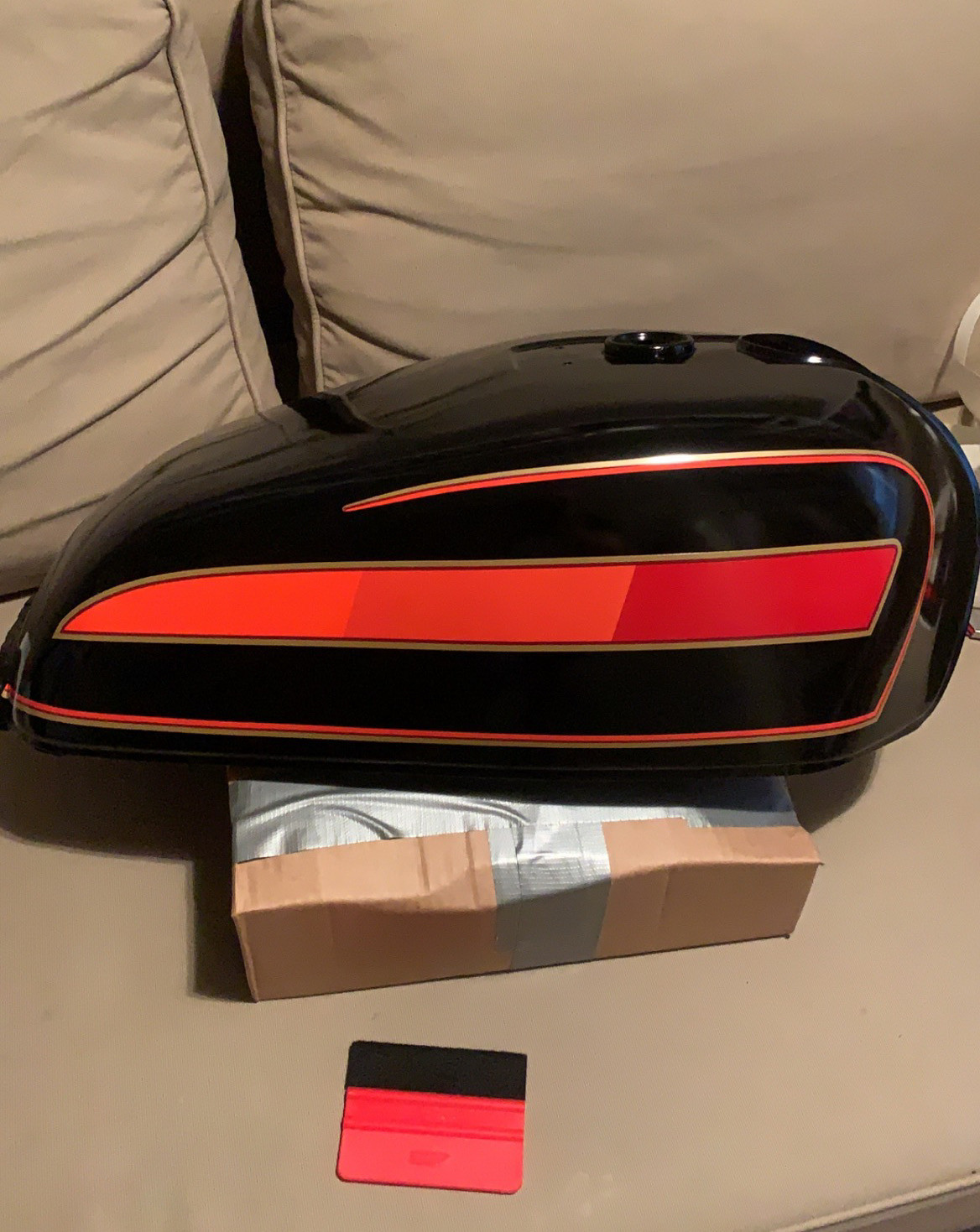Announcement
Collapse
No announcement yet.
Norwegian 1979 GS500E restoration.
Collapse
X
-
Did a some work on the gas tank, got rid of rust, brackets behind the Suzuki logo is gone as it was rusty behind it. Sanded down and did the whole nine yards. Put the new decor on it. Not sprayed on a clear coat yet as I need to do same thing with sidecovers and ducktail. Looking forward to get it all done and clearcoat the parts.
- Likes 1
Comment
-
I agree with Grimly re: Master cylinder bore diameter. Can't see the MC in the pic to see if it's the original GS or not. It's crucial that the MC bore matches the one that was used with the calipers on the donor bike. The ratio of MC piston area and caliper piston area is what determines the leverage the brake lever exerts on the brake pads. Too small an MC will give excessive travel and easy lock ups. Too big gives less travel and less force multiplication.Originally posted by Kenny View Postit brakes good. However the frontbrakes are soft to squeeze. Wondering if either the brake lines are to old and give in or the brake cylinder might be bad.
Also if the calipers have been rebuilt with new seals, the seals should be lubed with brake fluid or the lube that comes with the seal kit. If the seal sticks to the piston it won't self-adjust for pad wear by slipping through the seal and thus the piston retracts too far from the disc when the lever is released. Then all the initial lever travel is used up closing the gap when you grab the brakes. I learnt this after bleeding about a liter of brake fluid through my front brakes trying to flush out the non-existent air bubbles that MUST be the cause of my spongy brake lever.
- Likes 1
Comment
-
link test to the fresh painted and restored gastank.... just needs a coat of clear ten ready. Sorry for crap picture quality.
 65AAAE42-BD1B-442F-9B64-E44538A2F688 by Kenneth H, on Flickr
65AAAE42-BD1B-442F-9B64-E44538A2F688 by Kenneth H, on Flickr
- Likes 3
Comment
-
thanks for info. I will be using the original front discs again. And buy some new brakehoses too.Originally posted by KiwiAlfa156 View Post
I agree with Grimly re: Master cylinder bore diameter. Can't see the MC in the pic to see if it's the original GS or not. It's crucial that the MC bore matches the one that was used with the calipers on the donor bike. The ratio of MC piston area and caliper piston area is what determines the leverage the brake lever exerts on the brake pads. Too small an MC will give excessive travel and easy lock ups. Too big gives less travel and less force multiplication.
Also if the calipers have been rebuilt with new seals, the seals should be lubed with brake fluid or the lube that comes with the seal kit. If the seal sticks to the piston it won't self-adjust for pad wear by slipping through the seal and thus the piston retracts too far from the disc when the lever is released. Then all the initial lever travel is used up closing the gap when you grab the brakes. I learnt this after bleeding about a liter of brake fluid through my front brakes trying to flush out the non-existent air bubbles that MUST be the cause of my spongy brake lever.
Comment
-
 B73FEF8D-A4E3-4F51-8477-07F323FDE7CE by Kenneth H, on Flickr
B73FEF8D-A4E3-4F51-8477-07F323FDE7CE by Kenneth H, on Flickr
 001B22D5-D472-418D-B730-CFE8A123DF76 by Kenneth H, on Flickr
001B22D5-D472-418D-B730-CFE8A123DF76 by Kenneth H, on Flickr
- Likes 2
Comment
.png)
Comment